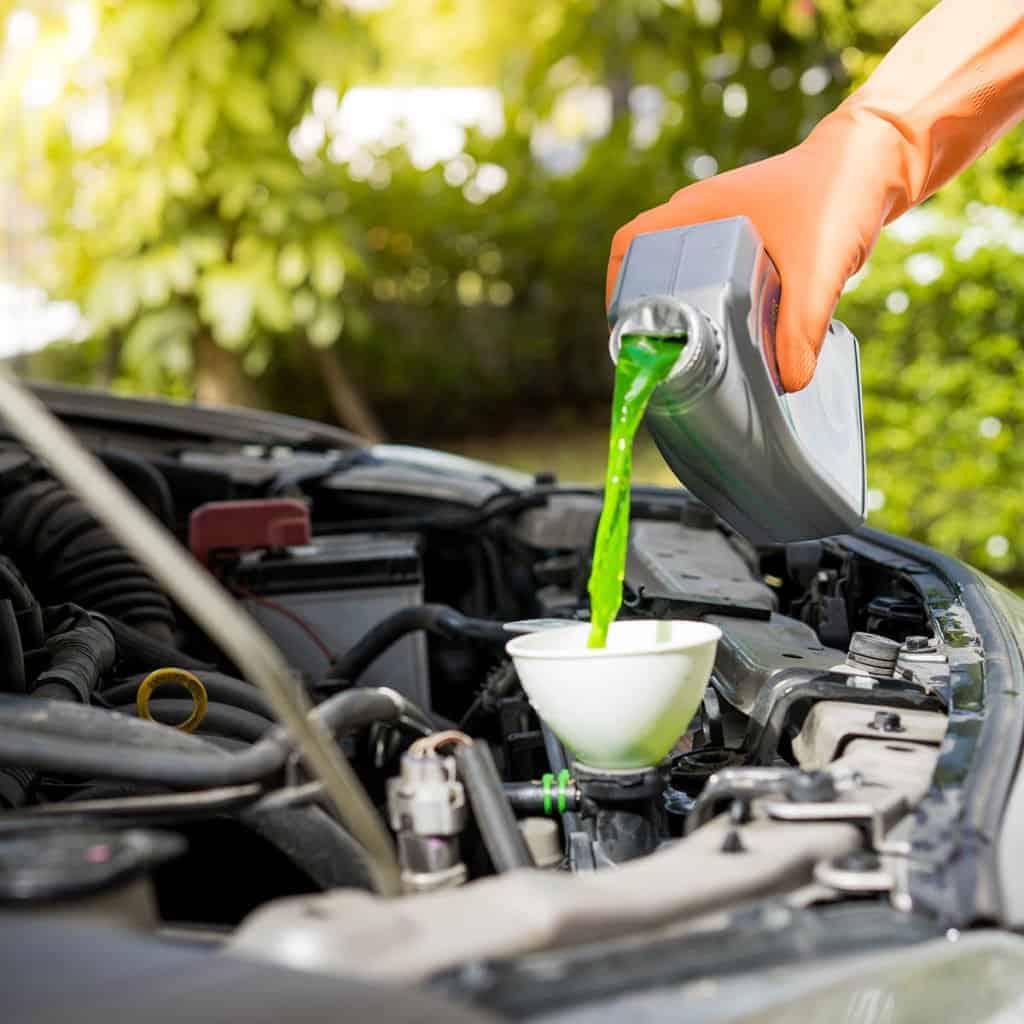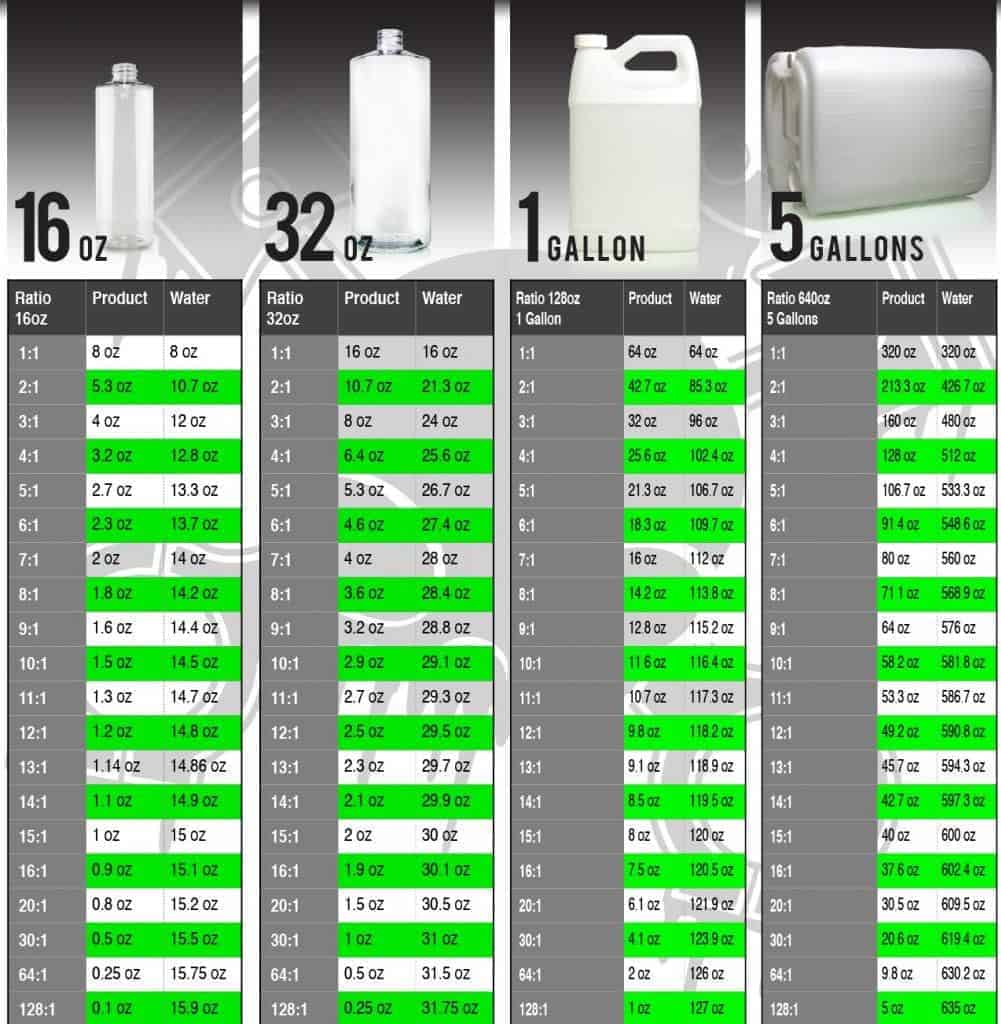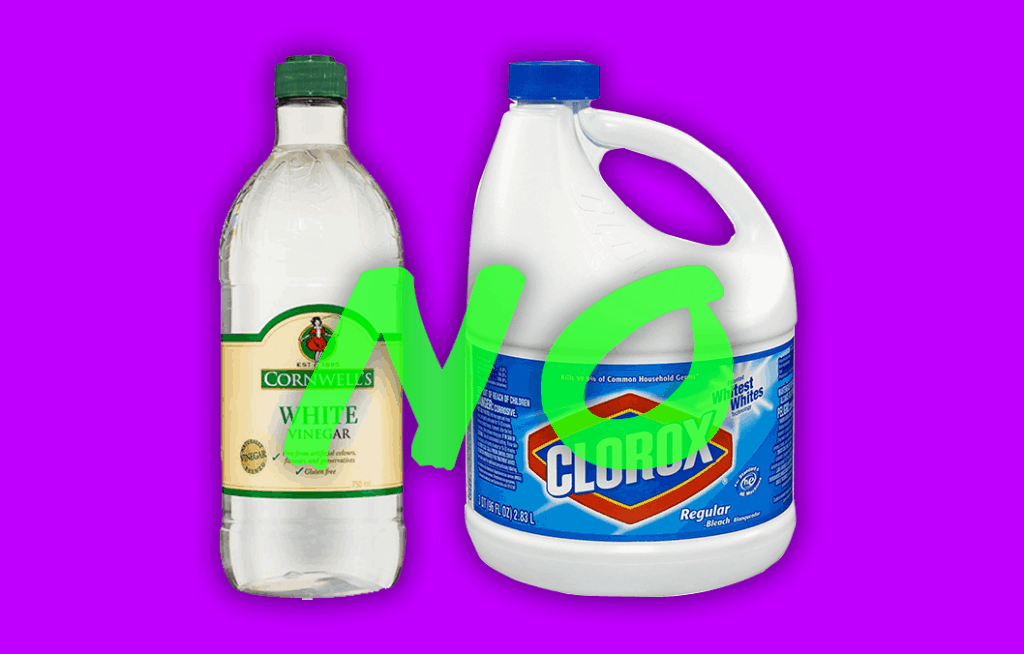Car cleaning chemicals were initially developed to streamline and improve the process of caring for daily drivers and garage queens. While most of them are quite effective at removing contaminants, improving shine, or getting those sticky bugs off your ride, they are dangerous.
This is a major reason why most car detailing manufacturers recommend diluting cleaning chemicals – especially those purchased in bulk containers. So how are you supposed to dilute car cleaning chemicals? This is what we’ll explore in today’s AvalonKing blog.
In the info below, we’ll explore the world of car cleaning chemicals. We will explain the dangers of industrial chemical cleaners for auto detailing, completing a car wash, using rinseless wash products, or waterless washing solutions that are concentrated.
We will also introduce some of the different options for car consumers and professional detailers to purchase concentrated waterless car products, and some practical tips for safely diluting the products you use to detail your car, truck, SUV, or other vehicles.
Where did Concentrated Car Cleaning Products Start?

So, where did the concept behind concentrated car cleaning products originate? Well, you can blame it on a smart businessman from San Diego, California – Sol Price. This genuine entrepreneur and former attorney opened his first retail business called FedMart in 1954.
FedMart was a discount department store open primarily to the military and their families and charged a modest $2.00 membership fee for the right to purchase larger quantities of foods, household supplies – and yes; toilet paper. Over a period of nearly 30 years, he opened more than 70 of these facilities – serving many States in the Western United States.
The success of FedMart inspired Mr. Price to start Price Club – a membership-based wholesaler, exclusively business owners of restaurants, small grocery stores, repair facilities, and other businesses that found value in buying their supplies in bulk. While the profit margin wasn’t necessarily great for wholesalers like Price Club – one fundamental concept fixed everything – “Volume Cures All”.
As Price Club grew, more wholesalers and even retailers started to ask manufacturers to package their products in the larger count. For cleaning products, this request inspired manufacturing companies to create highly-concentrated versions of their cleaning agents to remove dirt and grease – like multiple purpose cleaner for commercial applications, which could be diluted or mixed by the customer at their leisure.
Eventually, this business model expanded to the automotive industry, where several cleaning products were mixed in highly concentrated formulas. In fact, one of the first automotive products to be concentrated – was not a cleaning product at all.

It was an ethylene glycol solution invented in 1926, that is used to disperse heat, and diluted with water. Today, you know this product as an antifreeze.
What are the General Guidelines for Diluting Car Cleaning Chemicals?
Diluting chemical cleaning products for cars is an exact science. And that’s the point. Many car enthusiasts have it stuck in their heads that mixing a concentrated waterless car wash with water is like southern cooking – a splash of this – a dash of that and season to taste. (*editor’s note – don’t eat car cleaning chemicals – they’re not Tide Pods – and don’t eat those either).
There are however some general guidelines that consumers should follow – when they purchase concentrated formulas of chemical wash, wax, or degreasing agents.
First – Always Follow Manufacturer’s Precise Recommendations

Just as there are different types of car cleaning solutions, each manufacturer has unique formulations. Some have a higher dilution ratio than others. For example, a common concentrated car chemical cleaner is an all-in-one cleaner & degreaser.
One company recommends a mix ratio of 20 parts water to a one-part chemical. Another recommends a 22 to one ratio. Some commercial glass cleaner products are likewise concentrated. The main automotive product that is sold in concentrated larger containers is an all-purpose cleaner that removes grime, grease, oil, and other hard to remove contaminants.
The important thing to remember is that one-size-does-not-fit-all. Always read the specific instructions and use precise measurements for optimal effectiveness.
Second – Always Use Recommended Supplies

Most concentrated chemical agents for cleaning cars are going to be sprayed applied. This is typically completed in a plastic spray bottle. However, some chemicals are harsher than others and require a specific type of plastic bottle. Some recommend a steel bottle or a BPA-Free plastic to ensure it does not contaminate the cleaning solution.
You’ll usually find instructions on the company website – for which mixing supplies to use. Regardless of the type of cleaner, you’ll likely be pouring liquid from a larger container into a smaller bottle. So, make sure to invest in a high-quality and easy to use funnel.
Third – Always Use Safety Equipment

When a chemical cleaner is concentrated, it’s highly toxic. And – when you pour it from one larger bottle into another, the potential of spilling or splashing is a real threat. As such, here is a list of recommended safety supplies to use when mixing automotive cleaners that are concentrated.
- Safety Glasses
- Nitrile Gloves
- A Rubber Apron
- A Cloth Dust Mask
You might be wondering why I included that last one on the list. Well, concentrated chemical solutions can be extremely hazardous to your lungs. In fact, according to Right2Breathe.org, many adults over the age of 35 develop lung diseases such as Chronic Obstructive Pulmonary Disease or COPD – who have never smoked but were exposed to chemical cleaners and degreasers.

So – do your lungs a favor and wear at least a cloth dust mask to reduce the potential of inhaling this toxic crap.
Which Cleaning Chemicals Should You Never Mix Together?

DIYers love fabricating solutions to improve the performance of their rides. We all know this – and totally embrace it. But there are some things you don’t want to do.
First, never add a NOS system without changing the ignition timing. Second, never reduce your tire size from OEM recommendations, without swapping out the factory suspension and steering. Third, don’t take your car to the local automatic car wash. And finally – don’t mix these chemicals together.
If you are pondering mixing automotive cleaners – stop for a second, step back from the pipe, and get off the weed. Seriously, this is something that can literally be explosive or create toxic fumes that can kill you.
Here is a list of common chemicals that are often used as cleaners that you should NEVER mix.
Bleach & Ammonia

You’ll find both chemicals in many household cleaners – not so much with automotive applications. However, you’d be surprised how often car owners find a DIY car cleaning solution on YouTube.com – and think, “oh, that’ll work.”
It works alright – at burning your respiratory system and eyes, that can lead to damage to your internal organs – even death. For those old-school racers who follow our blog, you might be familiar with the product Hydrazine. That was used by some old drag racers as an enhancement to Nitromethane.
Well – that’s the combination of these two chemicals (in the right ratio) can produce. And, those who remember what happened to many of those engines with this stuff in them – it never ended up well.
Bleach & Rubbing Alcohol

Bleach basically shouldn’t be mixed with anything. But, mixing with rubbing alcohol, or isopropyl alcohol is not a good thing. In fact, with the right ratio – these two ingredients produce chloroform. If mixed incorrectly, it can also produce hydrochloric acid, dichloroacetate, or chloroacetone.
If you inhale chloroform, it will render you unconscious – just watch any cheesy 1980’s film where a dude used that white rag – and there you go. However, too much of that stuff will shut down your respiratory system. Hydrochloric acid can produce serious burns throughout your mouth, lungs, nose, and more.
Bleach & Vinegar

So – here we go again with two ingredients that can be explosive when mixed. Bleach plus vinegar produces chlorine gas. However, what’s not commonly known, is that vinegar can be replicated by other acetic acids like toilet bowl cleaners, lemon juice or lime juice.
Basically, don’t mix any chemical cleaners together. They are intended to be diluted with water – and that’s about it.
What are the Hazards of Using Full Strength Chemical Car Cleaners?
There is a major misconception out there that suggests that – the strong the cleaning solution, the better it will work. In automotive applications – this isn’t quite accurate. In fact, it’s flat out false. Using a concentrated cleaning agent or chemical degreasers can cause serious damage to clear coats, plastic trim, and destroy your ceramic coating, PPF, or other paint protection products.
Chemical agents are toxic. Exposure to concentrated formulas can also cause burns to skin, eye damage or irritation, and other physical conditions.
What Level of Chemical Dilution is Acceptable?

This question is very simple to answer – whatever is recommended by the manufacturer. Automotive car care manufacturers are quite particular about telling their customers what, how, and why their products should be diluted to a recommended water to chemical ratio.
But what if you have some deep cleaning to do – like an engine bay? This is where using a stronger chemical cleaner, with a lower dilution ratio is recommended. One major mistake that many car enthusiasts make is using a weaker solution, but a higher concentration of that product – instead of investing in the right solution.
If you’ve got serious cleaning due to excessive grease or oils, you need to purchase a product that is designed for those applications – not increase the strength of the weaker formulas.
Are there Exceptions for Diluting Chemical Car Cleaners?
Yes – while it’s attractive to want to save money by using one cleaner at different ratios, this is not a smart idea. However, there are some multipurpose car cleaner solutions that are specifically formulated to be diluted at different ratios – for extra strength purposes.
This video introduces you to a product by 3M – that can be diluted as strong as 4 to 1 or as weak as a 10 to 1 application.
Again – the key here is to always follow the manufacturer recommendation for concentration percentage. If they have a range from 4 to 10 to one – stay in your lane and keep it within that zone.
Are there Household Cleaners that You Should Avoid on Cars?
Absolutely. Cleaning products for cars are engineered specifically for automotive applications. Car paints and automotive materials are made much different than household products. So, using household cleaners on your car just never ends well.
Here is a list of items you should completely avoid using.
Dish Soap: If your a fan of doing things twice – by all means – have at it. Dish soap will strip the wax, but also leave a film on the surface that’s very difficult to remove. If you’re stripping car wax – do it the right way. This video actually is pretty good at explaining the concept. But, when he gets to the part when he says you ‘could’ use it prior to applying a ceramic coating, just cover your eyes and ears…and pretend you didn’t hear it.

Windex on Automotive Glass: This one baffles a lot of car owners. But it really breaks down to a single ingredient – ammonia. Automotive glass is tempered differently than household mirrors and windows. Using household glass cleaners like Windex on your automotive glass can leave streaks, but mainly causes yellowing or discoloring with exposure to UV rays. However, the brand Windex does make an ammonia-free product – that’s safe to use on cars.
Paper Towels: Using paper towels to clean your interior, glass, or God forbid, your paint surface is a recipe for disaster. They are not soft – and tend to scratch surfaces they are used. Always best to use microfiber towels when cleaning your car.

Pledge Furniture Polish: OK, so I’m tagging my dad on this one and calling bullshit! I used to use Pledge to clean and wax his 65 Barracuda drag car when I was a kid. But – this was (in Dad’s defense) when automotive paints were MUCH different.
Today, using furniture polish products is not a good idea, mainly because most car body panels are aluminum, plastic, or other materials. The products contain solvents that can make plastics to become brittle. Sorry, dad!
Wrapping it Up
So – what’s the verdict here? Simply put – if you’re going to purchase concentrated formulas of automotive cleaners, degreasers or other detailing products, ALWAYS follow the directions for dilution ratios.
These companies spend thousands of hours in product development, completing market research, testing formulas and more. This info is all collected to allow them to come up with the best concentrations that are safe and allow them to purchase bulk products their customers will enjoy.












